 Your new post is loading...
 Your new post is loading...
It’s been called the start of the next Industrial Revolution. Successful uses of AM have been evolving for more than 25 years and have led to the creation of a wide range of manufactured products, from dental implants and artificial limbs to airplane wings and car parts. President Barack Obama, in his State of the Union address this past February, noted its potential impact. Much recent press, including last week’s announcement of the Stratasys-Makerbot merger, makes the future of AM difficult to ignore, as its uses grow exponentially. A recent IDTechEx report says the market will be worth $4 billion by 2025. AM has the potential to allow many other leading-edge technologies to enter the marketplace more quickly and efficiently. Consider smart packaging. These packaging systems allow product manufacturers to track and trace goods, control temperature, monitor freshness, and ensure a product’s safety or authenticity. Other times, they offer interactive gimmicks, such as Heineken’s “Ignite” bottles. An unrelated IDTechEx report shows revenue from smart packaging growing to $1.45 billion in 2023. ...
Via Michael Dunham

|
Scooped by
Jacques Urbanska
June 25, 2013 5:05 PM
|
Terminal Projekt was a three day event of electronic music and visual arts, taking place at Sydney's Overseas Passenger Terminal. As part of the Vivid Sydney Festival 2013 the Sydney Overseas Passenger Terminal, a venue which looks out over the Sydney Opera House, was given a makeover. A large geodesic dome structure was installed and a big party was had as part of Terminal Projekt from Intel, ASUS, and Finely Tuned, which brought together the perfect bedfellows of electronic music and visual arts. ...

|
Scooped by
Jacques Urbanska
June 25, 2013 4:13 PM
|
Tecnología y Artes en Internet. TU INSPIRACIÓN DIARIA.
Comunicación online para ciber-artistas, amantes del arte digital y otras criaturas creativas del Social Media.

|
Scooped by
Jacques Urbanska
June 24, 2013 6:58 AM
|
Ça fait des années que j’explique, d’articles en conférences, qu’Internet n’est pas responsable de tous les malheurs du monde, que tout n’est pas de la faute au Net, qu’Internet n’est qu’un outil, un simple tuyau, que – comme tous les tuyaux – il est neutre par nature, et donc que ses usages n’ont pas à être davantage régulés ou contrôlés que les mêmes usages lorsqu’ils utilisent d’autres outils. Des années à combattre les répétitives tentations de régulation, autorégulation, corégulation et autres pseudo-déontologies plus ou moins imposées à un citoyen qui – parce qu’il ose s’exprimer en public – devrait répondre à d’autres lois que le droit commun du simple fait qu’il utilise un outil électronique qui, à l’inverse de ses ancêtres, n’est pas régulé par la rareté (de l’espace en kiosque ou en librairie, de temps de parole en télévision hertzienne). Des années que des Commissions, des Comités, des Conseils Nationaux, des Assises et des Séminaires nationaux cherchent les moyens de contrôler un réseau privé de pair à pair, qui s’est développé hors de tout contrôle à l’échelle internationale, fut-ce au prix de la liberté d’expression qu’il a enfin rendue accessible au plus grand nombre.

|
Scooped by
Jacques Urbanska
June 20, 2013 3:04 PM
|
Digital Publications are slowly ascending since a couple of years. Due to the rise of tablets and smartphones this development has accelerated and by now these publications – e-books, newspaper apps and digital magazines – are forever part of our media landscape. More and more people use mobile devices to read books and magazines and the coming years this way of information processing will dominate the market. Publishers can’t stay behind in relation to digital publishing. However, many publishers in the art- and cultural sector are unfamiliar with these developments. They do not have the knowledge, resources and capacities to develop new methods of digital publishing and participate in the digital market. Moreover, the art- and culture books have an extra challenge, because the form and content are deeply intertwined. This RAAK-MKB project will provide the research and realization of such a platform. The following research questions is formulated: “In what way can a platform be created with new tools for open source-publishing, by which publishers in the art- and cultural sector can produce interactive e-publications by themselves?” To answer this research question, the Institute of Network Cultures (lectortaat Netwerkcultuur) of the Amsterdam University of Applied Sciences and Knowledge center Creating 010 of the Hogeschool van Rotterdam are executing state-of-the-art research. In collaboration with an already existing consortium of eleven MKB-companies consisting of publishers, designers and developers, a fivesome subprojects will be formulated. Within these subgroups publishers, designers and developers, (research)lecturers and students of the participating applied universities will collaborate. The result is a new developed toolkit that exists of tools for digital publishing, based on open source-software of which the source code will be published and freely accessible. As a result everyone can freely copy, adjust and distribute the tools. Five e-publications of titles of the art- and culture books fund of the participating publishers will be produced and presented on a platform that is developed for that purpose. Moreover the following manual will be created: “How to publish an e-book?” on digital publishing processes.

|
Scooped by
Jacques Urbanska
June 20, 2013 2:47 PM
|
Programmé au théâtre de La Criée le 22 juin, à Marseille, “Superposition”, le nouveau spectacle de Ryoji Ikeda est une expérience métaphysique, une déflagration d’images et de son calculée au hertz et au pixel près, une partition quantique pour 22 écrans et deux performers sur scène...

|
Scooped by
Jacques Urbanska
June 18, 2013 4:35 PM
|
A serie of posts on the queer history of computing, as traced through the lives of five foundational figures. It is both an attempt to make visible those parts of a history that are often neglected, erased, or forgotten, and an effort to question the assumption that the technical and the sexual are so easily divided. There are many ways of telling the history of universal computation, and many origins of the technologies we now consider computational machines. A longer history might begin with Gottfried Leibnitz and Isaac Newton's simultaneous development of modern calculus and the dream of a universal artificial mathematical language. Alternately, we might look to the history of calculating machines, beginning with Charles Babbage's Difference Engine or Herman Hollerith's Electric Sorting and Tabulating Machine. Most every history would certainly include the contributions of Alan Turing, an English mathematician who is considered by many to be the father of computer science. In his relatively short career Turing formalized such concepts as "algorithm" and "computation," he helped crack the Nazi Enigma Machine during the Second World War, was a pioneer in the field of artificial intelligence, and developed early research on such concepts as neural nets, morphogenesis, and mathematical biology.
...

|
Scooped by
Jacques Urbanska
June 18, 2013 4:21 PM
|
Adam Brown is a conceptual artist working with scientists to create art pieces that use robotics, molecular chemistry, living systems and emerging technologies. Years ago, i saw one of his works at Emoção Art.ficial [Art.ficial Emotion], a Biennial of Art and Technology in Sao Paulo. The robotic sculpture, called Bion, explored the relationship between humans and artificial life. Fast forward to May 2013 when i am aimlessly clicking around and stumble upon one of his most recent pieces. This time, the project doesn't use swarms of responsive synthetic "life-form" but bacteria that, over a period of one week, process the toxins of gold chloride and produce nuggets of 24-karat gold.

|
Scooped by
Jacques Urbanska
June 18, 2013 3:43 PM
|
Project 1: Improving Stereo LocalisationProject 2: The Head-mounted TurntableProject 3: A Belt from the HTProject 4: The Ultimate TweeterProject 5: The 1812 AdaptorProject 6: The Audio PoliceProject 7: The "Jericho" 12-way Sub-WooferProject 8: The Oxygen-Free Listening RoomProject 9: Minimal Surface-Area ClothingProject 10: The Wall of SoundProject 11: The Laocoon LoudspeakerProject 12: Amplifier Debugging NEW!

|
Scooped by
Jacques Urbanska
June 17, 2013 1:50 PM
|
Le samedi 20 avril 2013, nous avons reçu une cinquantaine de personnes à l'occasion du Premier HFDAY . De quoi faire une étincelle de plus en France au sujet de l'Open-Source Hardware (Matériel Libre). Un grand Merci à tous ceux qui sont venu ou ont soutenu la journée en relayant l'information. tTh, Philippe, Léon (le cyborg), EricDuino (merci pour les photos ci-dessous d'ailleurs), Seb pour la RepRap blanche, Mix'Art-Myrys pour l'espace et le soutien moral.

|
Scooped by
Jacques Urbanska
June 15, 2013 6:53 AM
|
They are the winner of the section “Interactive art”, at the Prix Ars Electronica 2013, that taken place last 16th May in Linz, Austria (http://www.aec.at/prix/en/gewinner/#interactiveart): a deserved reward for André and Michel Décoster, which are working as Cod.Act since more than years, on the possible relations between sound, light and imagine (http://codact.ch/gb/pendugb.html). They are two brothers that in the 1999 started to put together their different knowledge (Michel is an architect and plastician and Andrè is a musician, compositor and plastician) creating particular devices, functional and lean to specific artistic projects, through that they refer to a post-industrial imaginary. Their work is in the edge between installation and digital performance, and the interaction of the different elements is the starting point for the entire structural genesis. There is a technological and musical research where the human presence becomes the joining link and the last signifier agent. ...

|
Scooped by
Jacques Urbanska
June 15, 2013 6:11 AM
|
jon.satrom : performs realtime audio/video, spends time data-bending, makes kludgey work-flows, and creates colorful glitch-ware. enjoys working within collaborative projects and open systems.

|
Rescooped by
Jacques Urbanska
from confettis
June 15, 2013 6:57 AM
|
Le miracle inter-linguistique du web public — tant qu’il dure — c’est de savoir lire sinon en allemand du moins en anglais l’entretien de Giorgio Agamben avec Dirk Schümer, lequel l’a traduit de l’italien sous le titre Die endlose Krise ist ein Machtinstrument [1] pour le journal de Francfort Frankfurter Allgemeine Zeitung (FAZ) du 27 mai 2013, à son tour traduit de l’allemand sous le titre The Endless Crisis as an Instrument of Power : In conversation with Giorgio Agamben [2] pour le site des éditions Verso le 4 juin 2013, afin de pouvoir enfin le traduire en français sous le titre Conversation avec Giorgio Agamben : La crise sans fin comme instrument de pouvoir dans La RdR le 9 juin. Juste retour des choses, s’agissant d’une réponse sur la polémique installée par l’article du 24 mars dans Libération, Que l’empire latin contre-attaque ! [3], non moins traduit de l’italien par Martin Rueff. Retour aux sources de la langue éclatée d’une affaire euro-critique en culture dont ici l’auteur s’explique...
Via Xavier Leton
|

|
Scooped by
Jacques Urbanska
June 25, 2013 5:38 PM
|
C’est une Toulousaine, un Rennais, un Caennais et une Grenobloise qui sont dans un bar… Cela aurait pu être le début d’une bonne blague, mais il s’agit en fait de la journée de travail du groupe Communautés d’Inmédiats qui s’est déroulée le 13 juin dernier à Paris. L’occasion de faire le point, d’avancer sur nos projets communs, de partager nos expériences… et de discuter tous ensemble autour d’un café autrement que par écrans interposés ! Une date loin d’être choisie au hasard car il s’agit de la journée de lancement de Futur en Seine, le festival du numérique. Puisque nous avons bien travaillé, eu le temps d’échanger quelques potins et de refaire le monde, nous avons bien mérité une petite visite du Centquatre et son « village des innovations », lieu incontournable de Futur en Seine paraît-il…

|
Scooped by
Jacques Urbanska
June 25, 2013 4:57 PM
|
1-Je viens d'apprendre l'existence de The Eternal Internet Brotherhood, via un petit billet fort intéressant du net artiste (ou neen artiste) pour les intimes Angelo Plessas! Il s'agit d'une sorte de camp de vacances pour les commissaires, artistes et auteures s'intéressant à la cyberculture. Cet événement que j'ai envie de qualifier d'ésotérique (j'aurais aimé y être, évidemment!) a eu lieu sur une île grecque cette semaine. 2-Un billet paru sur le blog du site Rhizome.org présente une série d'images sur le thème du graffiti numérique. J'aime beaucoup la manière dont les artistes présentés s'approprient l'espace public en y injectant une esthétique numérique. Lorsque j'ai enseigné un cours sur le net art et la cyberculture, il y a quelques années, j'avais justement introduit le sujet avec le graffiti. Il y a définitivement un lien profond entre la pratique du graffiti, la culture remix et la manière dont certains net artistes s'approprient le Web. ...

|
Rescooped by
Jacques Urbanska
from Art_Science_Technology
June 26, 2013 4:57 PM
|
An algorithm developed in EPFL’s School of Computer and Communications Sciences makes it possible to measure the dimensions and shapes of a room using just four microphones and a snap of your fingers. “Our software can build a 3D map of a simple, convex room with a precision of a few millimeters,” explains PhD student Ivan Dokmanić. Blind people sometimes develop the amazing ability to perceive the contours of the room they’re in based only on auditory information. Bats and dolphins use the same echolocation technique for navigating in their environment.
Via Frederik De Wilde

|
Scooped by
Jacques Urbanska
June 20, 2013 3:53 PM
|
Unmanned mobile devices, better known as drones, are one of the most significant ‘dark technologies’ of the 2010’s, and proceeds to reconfigure sociopolitical relations through the gesture of the remote gaze. Note that I say ‘mobile’, as opposed to ‘aerial’, as drones encompass unmanned land and water-based craft as well, but for our purposes, the flying eye has been the most visible technology in Baudrillard’s mediascape in terms of its use by the CIA in the Afghanistan/Pakistan and African theatres of operation. To compound matters, the 2012 FAA Reauthorization Act has created a milieu in which estimates are that there could be 10,000 domestic drones in use by 2020 (Bennett & Rubin). Drones are going to be one of the US’s major technology growth markets, with the devices being used in geographic, aerospace, and environmental research as well as military and law enforcement uses. ...

|
Scooped by
Jacques Urbanska
June 20, 2013 2:53 PM
|
A cyberspace Renaissance man reveals his current thoughts on the World
Wide Web, virtual reality, and other silicon dreams Jaron Lanier is probably best known as a pioneer of Virtual Reality technology but is probably best described as a modern Renaissance man--an eclectic mix of computer programmer, inventor, musician, artist and futurist. He divides his time between California and New York (where he has positions as a visiting scholar at Columbia University and as a visiting artist at New York University), but he can always be found in cyberspace. Scientific American editor Corey S. Powell caught up with Jaron Lanier in the summer of 1996, to hear some of his current thoughts on the World Wide Web, synthetic worlds and other silicon dreams. ....

|
Scooped by
Jacques Urbanska
June 18, 2013 4:44 PM
|
as two-thirds of the world’s population does not yet have internet access, google's 'project loon' - a network of balloons traveling on the edge of space - is designed to connect people in rural and remote areas, helping fill coverage gaps, and bringing people back online after natural disasters. floating high in the stratosphere - twice as high as airplanes and the weather - the 'project loon balloons' are carried around the earth by winds and they can be steered by rising or descending to an altitude with winds moving in the desired direction. people connect to the network using a special internet antenna attached to their building. the signal bounces from balloon to balloon, which then provides a connection back down on earth.

|
Scooped by
Jacques Urbanska
June 18, 2013 4:28 PM
|
Installation view at opening of Software exhibition at the Jewish Museum in New York, 1970. Image from exhibition catalog. Scholar Kathryn Farley, in a 2007 essay published by the Langlois Foundation, described Sonia Sheridan's contribution to Jack Burnham's Software exhibition in detail: In 1969, art historian and media theorist Dr. Jack Burnham approached Professor Sheridan about participating in an exhibition he was organizing at the Jewish Museum in New York for the following year. The exhibition, titled “Software,” exposed the public to a wide variety of perspectives concerning the functional applications of information processing systems....

|
Scooped by
Jacques Urbanska
June 18, 2013 4:12 PM
|
When the Whitney Museum of American Art decided to resurrect an early interactive Internet piece, the programming code no longer worked. But would updated software change the artwork? Paintings fade; sculptures chip. Art restorers have long known how to repair those material flaws, so the experience of looking at a Vermeer or a Rodin remains basically unchanged over time. But when creativity is computerized, the art isn’t so easy to fix. For instance, when a Web-based work becomes technologically obsolete, does updated software simply restore it? Or is the piece fundamentally changed? That was the conundrum facing the Whitney Museum of American Art, which in 1995 became one of the first institutions to acquire an Internet-made artwork. ...

|
Scooped by
Jacques Urbanska
June 17, 2013 4:49 PM
|
On y a tous été exposés sans exception dans notre vie de geek. En effet, le « .Gif » (Graphic Interchange Format, prononcer « djif ») est un format qui permet de publier des images animées sur Internet. Ainsi, rien qu’en vous promenant sur votre site de shopping préféré, les pubs qui vous harcèlent en sont un exemple. Je vous propose ici 6 points qui vont tenter de résumer les 25 ans de vie de ce format en regain de hype, et qui inspire encore beaucoup d’artistes aujourd’hui. Preuve en est, le verbe « to Gif » était le mot de l’année 2012 élu par l’Oxford University Press, rien que ça...

|
Scooped by
Jacques Urbanska
June 16, 2013 2:28 PM
|
Truc 2 geek, les choses sont claires : la programmation, les bases de données, la robotique seront le coeur de cet espace.
Loin d’être un expert, je suis simplement curieux, je cherche des infos, j’essaie, je recommence… On trouve beaucoup d’informations et tutoriels sur le net, et j’aime compléter ça par un bon livre pour avoir une base solide.
Mon but est d’apprendre à utiliser plusieurs langages de programmation/logiciels et pourquoi pas, un jour, reprogrammer le monde ;-)
En attendant, et pour résumer l’objectif de ce blog en une ligne : je souhaite faire partager mon apprentissage.

|
Scooped by
Jacques Urbanska
June 15, 2013 6:24 AM
|
Unless you’ve been living in a remote island for the last few years, you’ve heard about crowdfunding or stories of people raising thousands or millions of dollars online. In fact, there’s been so much chatter out there about crowdfunding that people love to throw out the line “yeah, I’ve heard there are something like 500 crowdfunding sites.” While hundreds of sites may be popping up, not all of them have real communities and funding successes under their belt. Which begs the question… what crowdfunding site is best for you? As a crowdfunding industry insider, I thought I’d give you an easy guide for which site to go to for your crowdfunding needs. I’ll start with a tiny overview of the industry, a short primer on the different types of crowdfunding so you know what you’re looking for, and then I’ll get to specific recommendations for you. The Crowdfunding Industry Collaboration on the web is an area of exponential growth. Crowdfunding, or collaborative funding via the web, is one of the standouts for growth in this evolving collaborative economy. The Crowdfunding Industry Report by Massolution put out data showing the overall crowdfunding industry has raised $2.7 billion in 2012, across more than 1 million individual campaigns globally. In 2013 the industry is projected to grow to $5.1 billion. ....

|
Rescooped by
Jacques Urbanska
from Livres photo
June 15, 2013 7:03 AM
|
Two years ago, I spent part of November with Carolyn Russo on a trip to China, so it was great to spend time with her at Photolucida and see the culmination of her global travels resulting in her project, The Art of the Airport Tower. In talking with Carolyn about the project, she spoke to the fact that airport towers will one day become obsolete due to advanced technology. Each tower has it's own distinctive architecture worth preserving on film.
Via Mario Pires, Cedric Doux, Florence Trocmé
|



 Your new post is loading...
Your new post is loading...

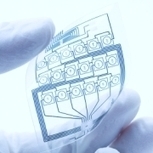


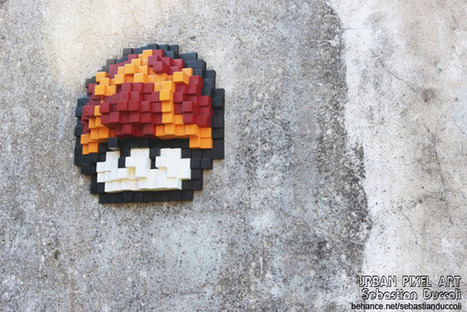
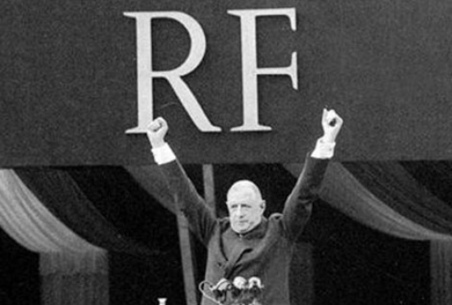

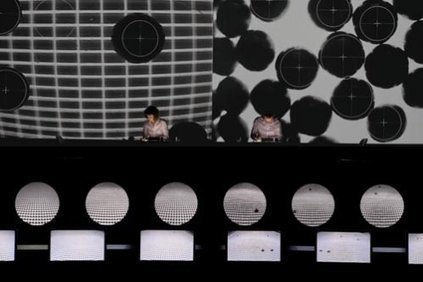
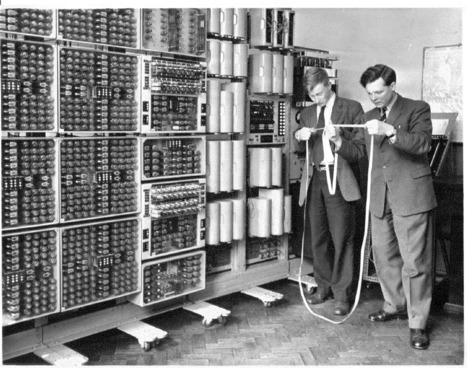
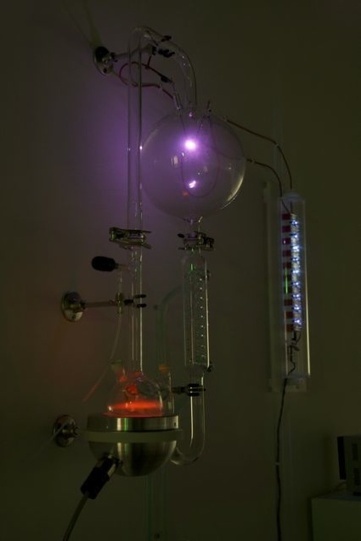
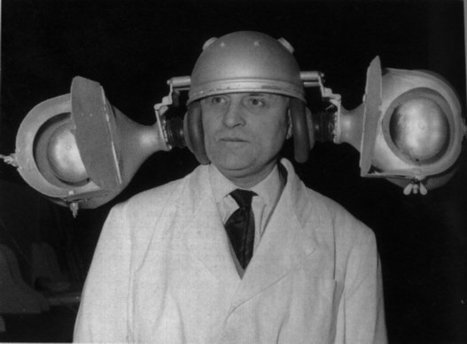

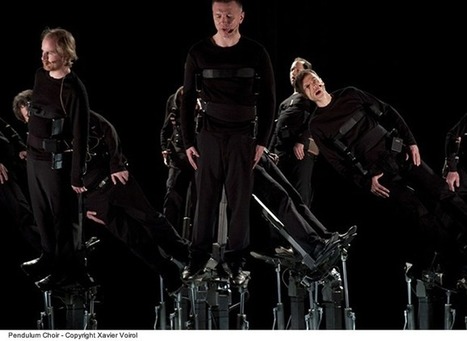




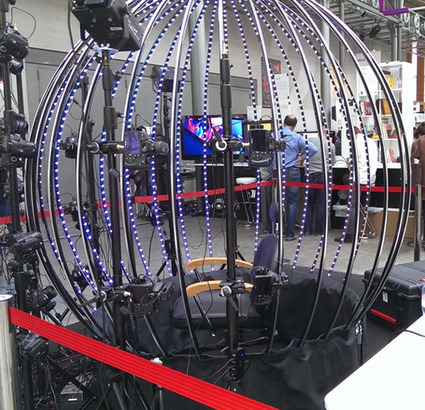
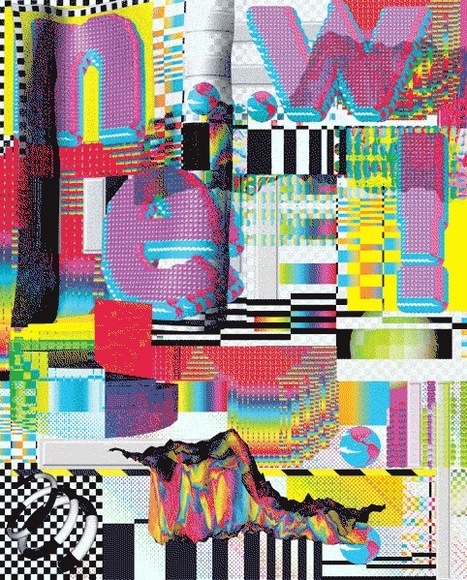
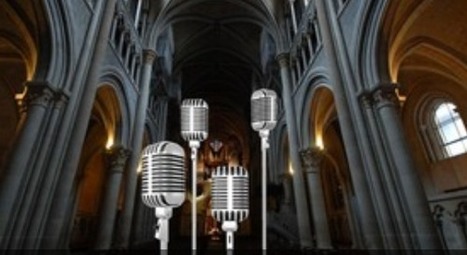
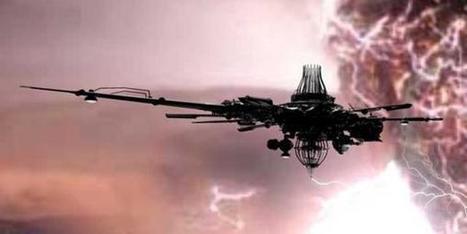



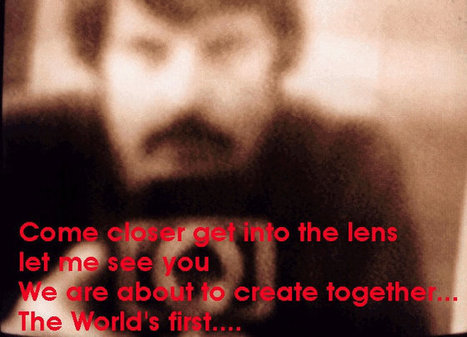

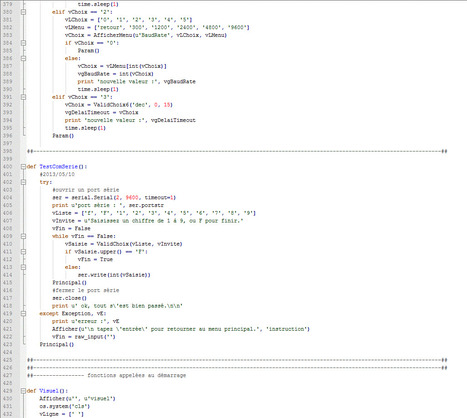
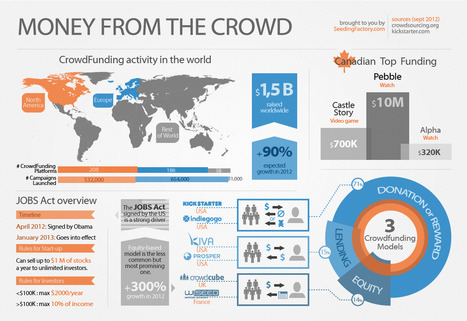






Interesting article regarding several aspects of 3D Manufacturing/3D Printing technology (Speed, Material, Costs) - especially an incoming more or less "seamless" integration of RFIDs within the production process adds a lot of potential.
Great article evaluating whether the current 3-d printing tech is sufficient to carry out what sounds like a neat idea to solve an existing problem in adopting a different leading-edge technology The answer is no, but the thought process is worth reading.